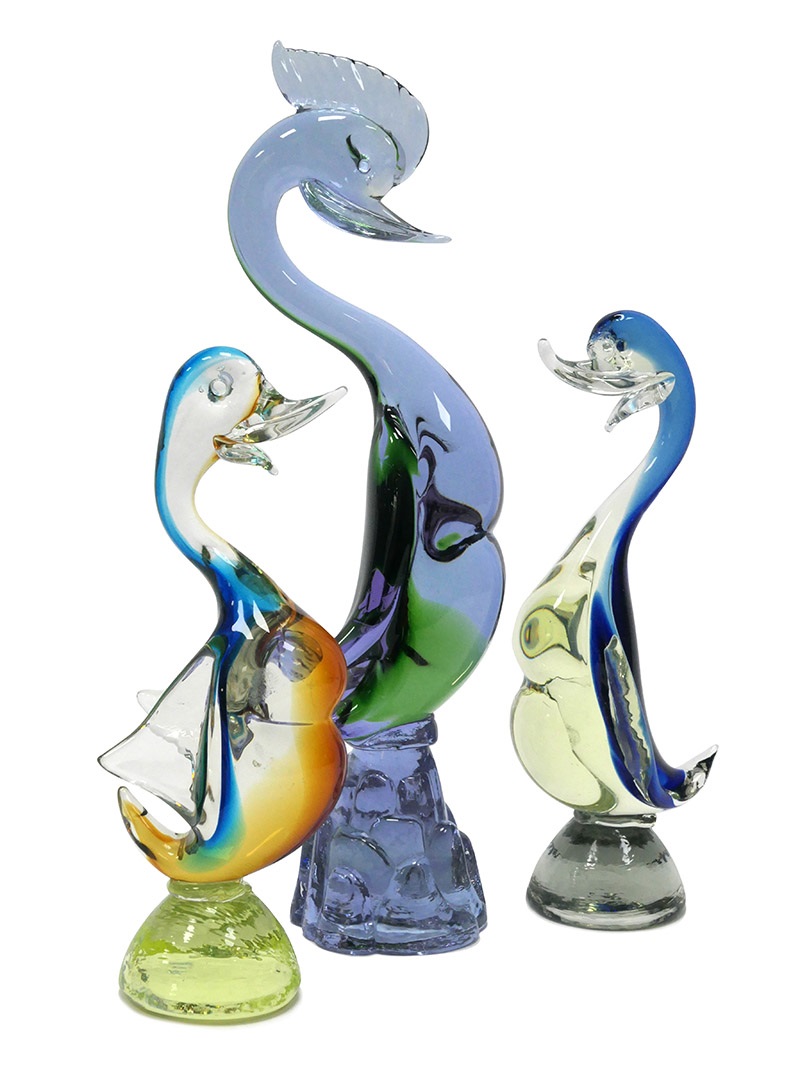Murano Glass
Murano refers to a type of glassware that originates from the Venetian Island of Murano in Italy.
01/12/2023 Blog
Murano refers to a type of glassware that originates from the Venetian Island of Murano in Italy. It has a rich history dating back to the Romans and is renowned for its exquisite craftsmanship and unique techniques.
Murano glass is made from a fusion of silica, soda, lime, and potassium which are melted together in a special furnace at a temperature of 1500°C to reach a liquid state. Very fine layers of 24K gold or sterling silver are often added, together with other minerals to create vibrant colours which never fade. The resulting liquid is then mouth-blown and hand-shaped by master glassmakers.
In the 1200’s Venice had become the world’s centre for glassmaking, indeed the largest industry within the city, necessitating the formation of the Glassmakers Guild who passed a number of laws to protect the trade. Initially the import of foreign glass as well as employment of glass workers from outside the city was banned. Venetian glassmakers were forbidden from leaving the city in fear of disclosure of trade secrets.

In 1291 another law was passed, under the guise of preventing a disastrous fire in a predominantly wooden city, all glass making furnaces were moved to the island of Murano, forcing glassmakers within the city to relocate alongside. To encourage the very best artisans and tradesmen, the workers were imbued with a strong social status permitting their daughters to marry into Venetian nobility, securing the blood line of Venice’s profitability. Murano remains home to expert glassmaking artisans to this day, including one of the oldest businesses in the world, Barovier & Toso, who were founded in 1295.
Murano glass held the monopoly of the market for centuries, peaking in the 15th and 16th centuries before starting a slow decline following the emergence of other glassmaking in France and Bohemia. It was during the Aesthetic Movement that the revival of Murano glass began. The Murano pieces produced from 1895 embraced the emerging trend of “art for art's sake” and traditional craftsmanship was used alongside bold new techniques.
Collectors around the world covet Murano glass as a piece of art. Its intricate designs, vibrant colours, and delicate details make it highly sought after in auction.
The value of Murano glass depends on various factors such as who made it, when it was made, the techniques used, and its rarity. Pieces created by renowned master glassmakers or those from specific time periods can fetch higher prices due to their historical significance and craftsmanship.